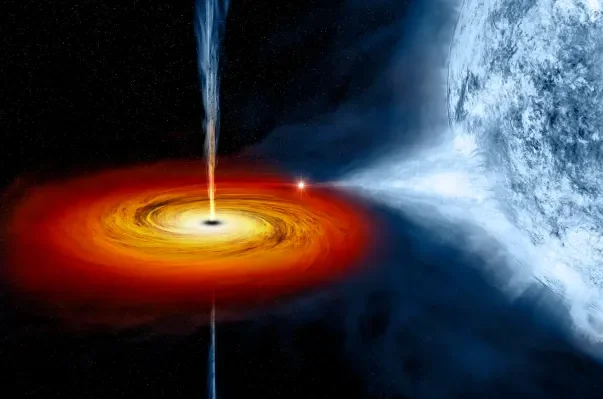The News Freedom
Chandigarh, January 1
Scientists are driven to explore the mysteries of black holes because these cosmic enigmas hold crucial keys to understanding fundamental aspects of the universe. Studying black holes helps refine our knowledge of gravity, space, and time—three foundational elements shaping the cosmos. Unraveling their secrets can offer profound insights into the laws of physics under extreme conditions, such as the behavior of matter under immense pressure and temperatures.
Moreover, black holes play a pivotal role in the evolution and structure of galaxies. By comprehending how they form, grow, and interact with their surroundings, scientists gain a deeper understanding of the cosmic processes influencing the entire universe.
Furthermore, black holes challenge our current understanding of physics, particularly regarding the nature of singularities, where known physical laws break down. Discoveries in this realm may pave the way for a unified theory that reconciles quantum mechanics and general relativity, revolutionizing our comprehension of the universe at its most fundamental level.
Ultimately, exploring black holes isn’t merely about understanding these enigmatic cosmic entities; it’s about unraveling the fabric of the universe itself, advancing our scientific knowledge and reshaping our perception of the cosmos.
The Indian Space Research Organisation (ISRO) initiated its first mission of 2024 by launching XPoSat (X-ray Polarimeter Satellite) alongside 10 other satellites from Sriharikota’s spaceport using a PSLV-C58 rocket today. This marks India’s inaugural XPoSat mission, designed to investigate the polarization of intense X-ray sources, specifically delving into the enigmatic realm of black holes.
What is black hole?
Black holes are mysterious cosmic entities born from the remnants of massive stars that have collapsed under their own gravity. These celestial bodies exert such intense gravitational pull that not even light can escape their grasp, rendering them invisible to direct observation.
At the heart of a black hole lies the singularity, a point of infinite density where the laws of physics, as we currently understand them, break down. Surrounding the singularity is the event horizon, an invisible boundary beyond which nothing can escape. Anything crossing this boundary, known as the “point of no return,” is inexorably drawn into the black hole.
Black holes come in various sizes, from stellar-mass black holes, formed by the collapse of massive stars, to supermassive black holes found at the centers of most galaxies, containing millions to billions of times the mass of our Sun.
Despite being invisible, their presence is often inferred through the effects they have on surrounding matter and light. They distort the fabric of spacetime, causing nearby objects to orbit them or spiral into their depths. As matter is pulled in, it forms an accretion disk—a swirling mass of superheated gas and dust emitting powerful radiation, detectable by telescopes.
While black holes remain enigmatic, their study continues to unravel fundamental mysteries of the universe, offering insights into gravity, space, and time itself.
